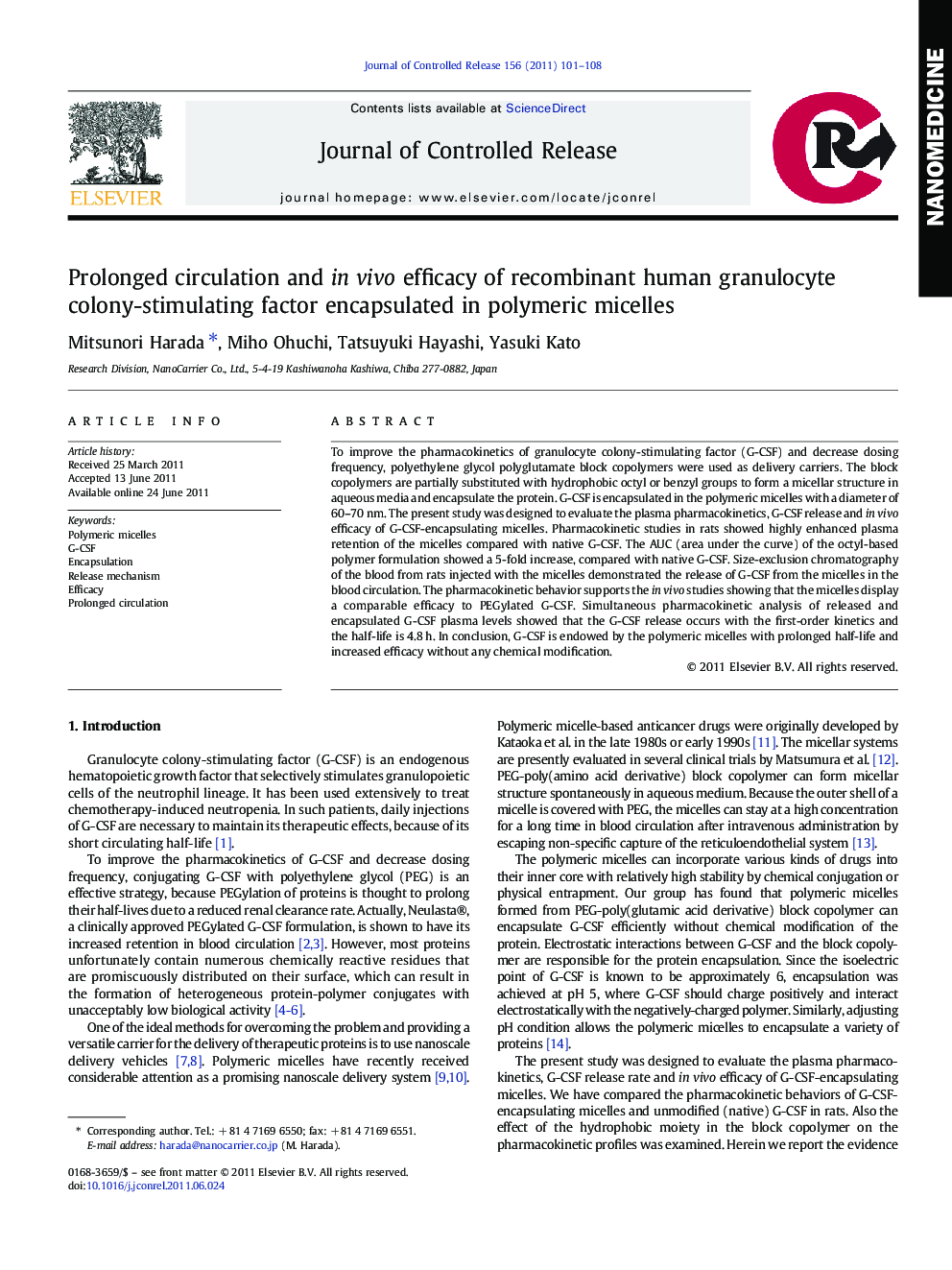| Article ID | Journal | Published Year | Pages | File Type |
|---|---|---|---|---|
| 1424907 | Journal of Controlled Release | 2011 | 8 Pages |
To improve the pharmacokinetics of granulocyte colony-stimulating factor (G-CSF) and decrease dosing frequency, polyethylene glycol polyglutamate block copolymers were used as delivery carriers. The block copolymers are partially substituted with hydrophobic octyl or benzyl groups to form a micellar structure in aqueous media and encapsulate the protein. G-CSF is encapsulated in the polymeric micelles with a diameter of 60–70 nm. The present study was designed to evaluate the plasma pharmacokinetics, G-CSF release and in vivo efficacy of G-CSF-encapsulating micelles. Pharmacokinetic studies in rats showed highly enhanced plasma retention of the micelles compared with native G-CSF. The AUC (area under the curve) of the octyl-based polymer formulation showed a 5-fold increase, compared with native G-CSF. Size-exclusion chromatography of the blood from rats injected with the micelles demonstrated the release of G-CSF from the micelles in the blood circulation. The pharmacokinetic behavior supports the in vivo studies showing that the micelles display a comparable efficacy to PEGylated G-CSF. Simultaneous pharmacokinetic analysis of released and encapsulated G-CSF plasma levels showed that the G-CSF release occurs with the first-order kinetics and the half-life is 4.8 h. In conclusion, G-CSF is endowed by the polymeric micelles with prolonged half-life and increased efficacy without any chemical modification.
Graphical abstractFigure optionsDownload full-size imageDownload as PowerPoint slide
